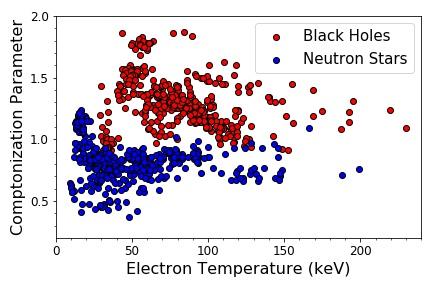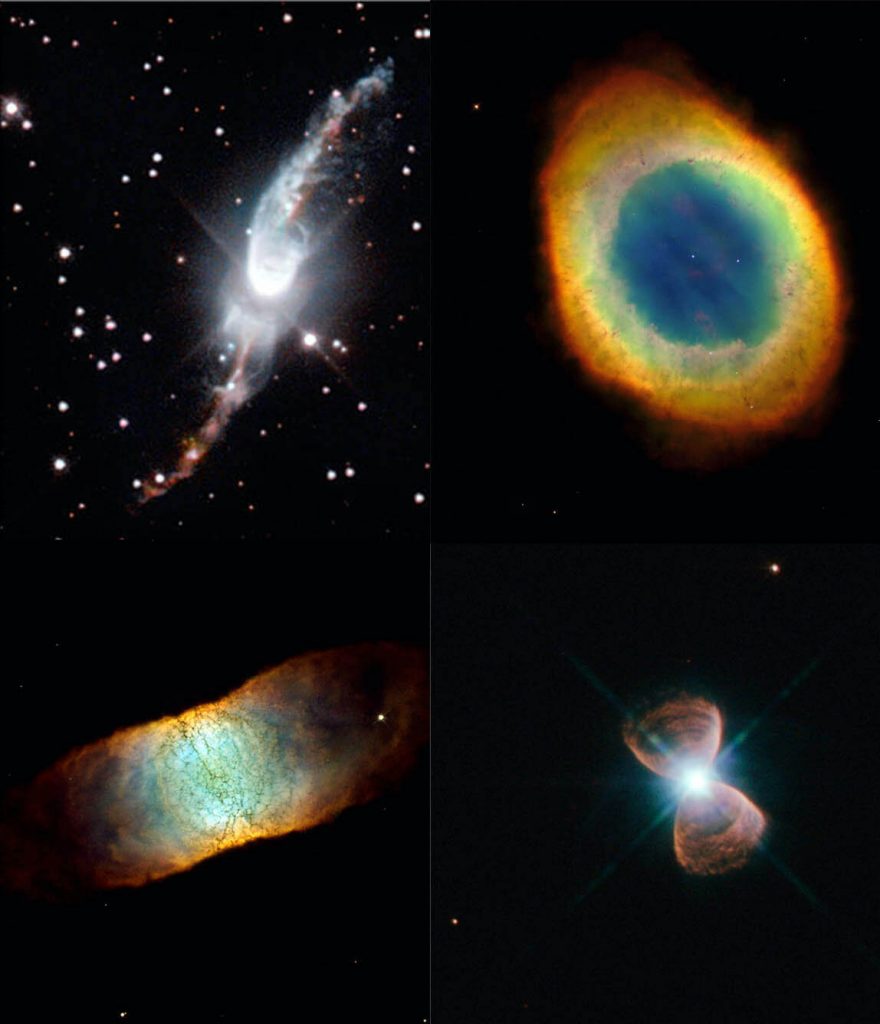Media
Transcript
For fans of geometry-based holidays, happy equinox! Today, the Sun passes straight overhead at the equator as it makes its way south. With spring coming to Australia, South America, Africa, and points in between, we here in the north are seeing the first hints of fall. This is your regular reminder that the reason for the weather seasons is geometry.
Turning to the news, we’d like to start things out by making the invisible a little easier to find.

In astronomy, one of our more annoying struggles has come from trying to find stellar-mass black holes. While we know they should exist, saying with certainty that any one particular object is a black hole and not a neutron star has been a challenge. Both these objects represent the end stage of a massive star’s life. Stars that end with less than about 3.5 solar masses after experiencing both mass loss as a star and mass ejection as a supernova end up as a neutron star – an extremely dense object about the diameter of Manhattan Island that is made largely of neutrons in a matrix. These objects have a surface and, in some cases, will undergo dramatic novae activity as the material building up on their surfaces or in a disk around them periodically undergoes nuclear explosions.
Objects that end up larger than that 3.5 solar masses end up as black holes. This happens because neutrons can’t repel one another under that much gravity, and they crush together into some state we can’t explain. No one really knows what goes on within a black hole’s event horizon. What we do know is that a black hole is so small that any surface that does exist is within a radius from which you have to go faster than the speed of light to escape. Yes, folks, the defining factor of a black hole is that its escape velocity is greater than the speed of light, and since nothing can go faster than the speed of light, whatever is going on at that possible surface is beyond our ability to see or presently understand.
While the physics of neutron stars and the smallest black holes are vastly different, they are nevertheless super hard to see and distinguish. In binary star systems, we detect both objects from their pulls on a companion star and the interaction between them and their surroundings. In many cases, we can’t directly see either object. What we see instead are X-rays from the material they are consuming.

New research published in Monthly Notices of the Royal Astronomical Society (MNRAS) with first author Srimanta Banerjee, looks at the X-rays from a large selection of sources they think they can identify as neutron stars or black holes to see if there are any defining characteristics that may separate the neutron stars from the blackholes. They found that black holes shift the spectrum with their gravity, causing two different populations to stand out. This means that we should be able to look at other systems where the geometry makes it hard or impossible to accurately measure the dead object’s mass, and say that “because it looks like this in the X-rays” it should be a black hole (or a neutron star). This is the first diagnostic we’ve had other than mass.
A remarkable amount of astronomy depends on being able to find objects with companions. And, it turns out, a remarkable amount of astronomical phenomena are due to objects with companions.
One of the harder to explain objects in the sky are planetary nebulae. These expanding clouds of often structured gas are formed when Sun-like stars die and exhale their outer atmosphere. How this process leads to square looking concentric gas patterns, well, figuring that out was part of the justification to fund the Hubble Space Telescope, but even its great optics weren’t up to the challenge.

It turns out, the Atacama Large Millimeter/submillimeter Array (ALMA) was needed to study the wind morphology in fourteen planetary nebulae. By looking at the structure of the winds, they were able to conclude that a binary star origin can explain what we’re seeing. According to the press release: They estimate the binary’s changing influence on the wind and nebula as the primary star evolves, its wind increases, and the separation grows, and report that they can successfully explain the various nebular morphologies in this evolutionary framework.
In this model, different shapes are driven by different geometries, masses, and evolutionary stages. With so many variables that can change, we can get the seemingly infinite combinations of structures we observe.
You can read about this work in the latest issue of Science in a paper with first author Michael Funk.
Even the interactions between small objects can drive appearance changes in wild ways.
In Nature Astronomy there are two different papers looking at the same weird feature of the asteroids Bennu and Ryugu. These asteroids are essentially rubble piles, and while their compositions differ, they are both primarily composed of dark rubble that includes minerals that include water in their structure or formed in the presence of water. Sprinkled atop both these asteroids are compositionally different bright boulders that are from something that was hot and dry.

In the Bennu-related paper, with first author Daniella DellaGiustina, they discuss using OSIRIS-REx’s Visible and Infrared Spectrometer to study these boulders’ composition. They discovered that the boulders appear consistent with the mineral pyroxene, which is common on Vesta and vestoids – small asteroids chipped off Vesta during past impacts. According to co-author Hannah Kaplan: Our leading hypothesis is that Bennu inherited this material from its parent asteroid after a vestoid (a fragment from Vesta) struck the parent. Then, when the parent asteroid was catastrophically disrupted, a portion of its debris accumulated under its own gravity into Bennu, including some of the pyroxene from Vesta.
Let me put this another way. Once upon a time, a reasonably large asteroid was minding its own business as it orbited the solar system and it was struck by a chunk of Vesta that stuck. At some later date, an even larger object hit this asteroid, breaking it into the myriad pieces we see today. This means Bennu is a mix of some parent object, some vestoid that hit that parent object, and additionally at least one more object responsible for its shattered nature.
The solar system is a rough place to be.

The team looking at Ryugu was using JAXA’s Hayabusa2, which has a different suite of instruments that allow different kinds of explorations to be done. Using Hayabusa2’s spectrometer, researcher Eri Tatsumi is able to say: Ryugu is considered a C-type, or carbonaceous, asteroid, meaning it’s primarily composed of rock that contains a lot of carbon and water. As expected, most of the surface boulders are also C-type; however, there are a large number of S-type, or siliceous, rocks as well. These are silicate-rich, lack water-rich minerals and are more often found in the inner, rather than outer, solar system.
While this isn’t as definitive as saying “bits of Vesta are on Ryugu”, it is still the same story of impact after impact adding new minerals while destroying previous structures.
For us here on Earth, this has mostly worked out ok. The dinosaurs were destroyed by one iridium-carrying asteroid, but most of the asteroid strikes have left us intact. Nevertheless, this is a reminder that we need to keep looking up and looking out for the object looking to mess up our world.
Learn More
Cosmic X-rays reveal an indubitable signature of black holes
- Tata Institute of Fundamental Research press release (Eureka Alert)
How planetary nebulae get their shapes
- Center for Astrophysics | Harvard & Smithsonian press release
- “(Sub-)Stellar Companions Shape the Winds of Evolved Stars,” Leen Decin et al., 2020 Sep. 18, Science
NASA’s OSIRIS-REx to Asteroid Bennu: “You’ve got a little Vesta on you…”
- NASA Goddard article
- “Exogenic basalt on asteroid (101955) Bennu,” D. N. DellaGiustina et al., 2020 Sep. 21, Nature Astronomy
Ryugu’s rocky past
- The University of Tokyo press release
- “Collisional history of Ryugu’s parent body from bright surface boulders,” E. Tatsumi et al., 2020 Sep. 22, Nature Astronomy
Credits
Written by Pamela Gay
Hosted by Pamela Gay
Audio and Video Editing by Ally Pelphrey
Content Editing by Beth Johnson
Intro and Outro music by Kevin MacLeod, https://incompetech.com/music/

 We record most shows live, on Twitch. Follow us today to get alerts when we go live.
We record most shows live, on Twitch. Follow us today to get alerts when we go live.